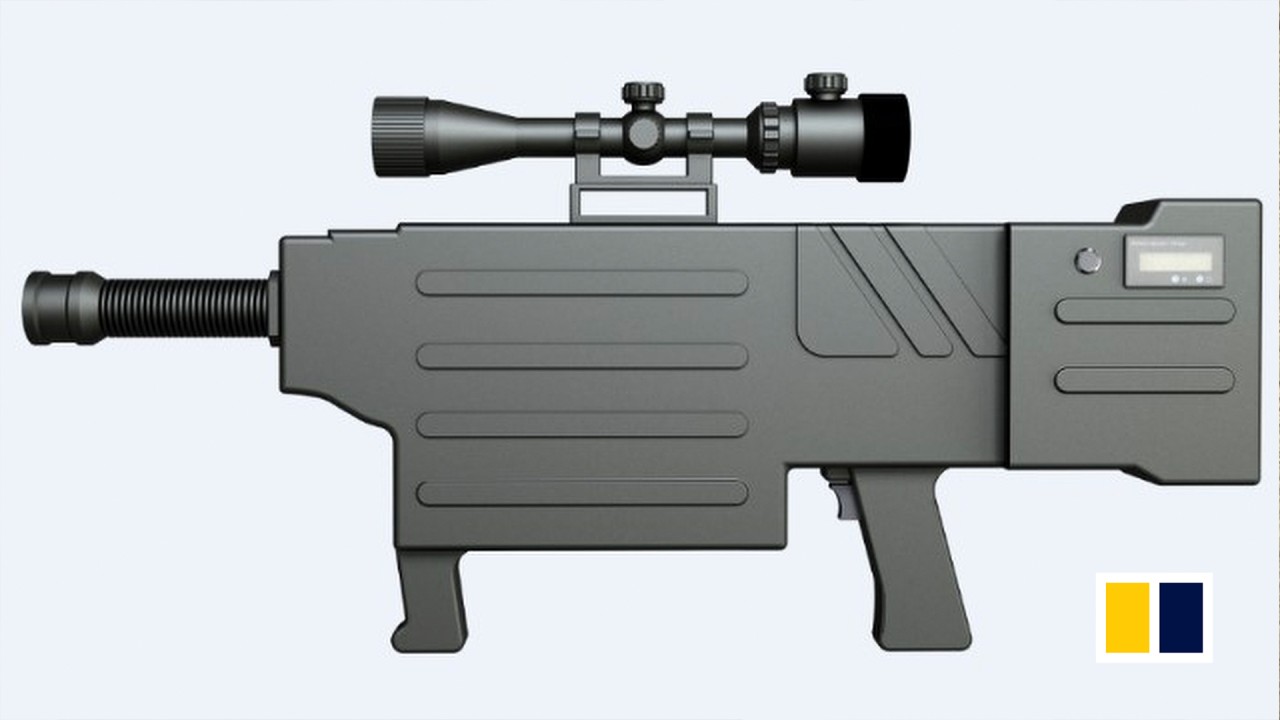
The Force may not be with us, but what about the tech in ‘Star Wars’?
- In 1977, ‘Star Wars’ blew away audiences with faraway visions of lightsabers, droids and holograms
- Decades later, has any of the franchise’s iconic technology come even close to becoming real?
There are few film lines that are more iconic than “may the Force with you”. Say it a few times fast (or make a young child say it a few times) and it can sound like “may the Fourth be with you”.
Apparently enough people said it this way that now May the Fourth, May 4, is the designated day for celebrating all things “Star Wars”.
The year 2021 especially is a big year, as it’s the 44th anniversary of the US premiere of the first “Star Wars” film by George Lucas.
Just in time for this Force-tastic holiday, here is a list of some of the futuristic items that became real – as well as some that didn’t:
Lightsaber
The young Luke Skywalker – main protagonist in the original film – is handed a lightsaber in the home of Jedi master Obi-Wan Kenobi. “This is the weapon of a Jedi Knight. Not as clumsy or random as a blaster; an elegant weapon for a more civilised age,” explains Obi-Wan Kenobi.
But would a lightsaber function in real life? According to “Star Wars” expert and physicist Sascha Vogel, the answer is no.
He gives two reasons behind his logic: first, “light doesn’t just stop anywhere” – ie, the lightsaber’s tubular shape. And second, “light is not interested in other light.” What he means is that neither resistance nor sound – which happens during the movie’s lightsaber duels – are currently feasible in real life.
Something similar does exist: the plasma sword, created by inventors in Canada. It uses electrically charged gas held in place by magnetic fields, says Vogel. “It’s like a highly targeted flame-thrower”.

Holograms
In the “Star Wars” universe, holograms are used for communication, for example when R2-D2 transports and then plays a hologram recorded by Princess Leia asking Obi-Wan Kenobi for help.
“It’s relatively easy to do that today,” says Vogel. For example, he cites laser installations at events.
Going one step further is an invention from the University of Sussex in which a 3D image can be generated through sound. To do this, a tiny ball is moved very quickly through the air by ultrasonic waves.
Droids
Who could forget the beloved sidekicks C-3PO and R2-D2? And how many times have fans pined for such robotic buddies to call their own? A firm near Boston specialises in lifelike movements by robots.
The US company caused a sensation a few years ago with a model that moves like a dog. But it’s more difficult to create one that moves like a human, not to mention has the ability to communicate, says Vogel. But it’s not that far of a leap then to one who looks human.
Interstellar travel
Han Solo loved to boast that he could do the Kessel Run in 12, instead of 18, parsecs. But despite the name, a parsec is a unit that measures distance, not time: one parsec equals 3.26 light years, or about 30.9 trillion kilometres. Put more succinctly: Han Solo “simply took short cuts,” according to Vogel.
But flying that many light years in such a short amount of time is, in short, just not possible – at least according to Albert Einstein’s theory of relativity, which holds: you can’t go faster than light.

00:43
Chinese ‘Star Wars’ laser weapon appears to set fire to objects at a distance
Blaster
Another one of Han Solo’s most famous scenes is when he trains his blaster – a kind of laser cannon that can fit in your pocket – on Mos Eisley under the table at a cantina they’re at.
Sorry, Vogel says – such a weapon in that size doesn’t exist – yet.
There are several examples of large laser cannons, but they require vast amounts of space. Their size is due to the fact that they require large amounts of energy, says Vogel, who points to new technology that’s currently being developed by the US Navy.
“To put it in a banal way, it’s like a large laserpointer,” he says.
But Vogel isn’t ruling out the possibility of smaller blasters in the future. “Not tomorrow and not in 10 years. Physically speaking, however, there’s nothing that says it can’t exist in the future.”
Landspeeder
Luke Skywalker uses a landspeeder to get around the desert planet of Tatooine. The vehicle bobbed in the air, seemingly unaffected by gravity. Could such a vehicle exist in real life?
As Vogel explains, you can’t override gravity. “It doesn’t work in physics.” One possibility, however, to achieve a similar effect would be to equip a speeder with propeller units, similar to a drone.
Things get a bit more complicated with superconductors: These materials, which include several metals, can be chilled to very low temperatures and as a result lose their electrical resistance – and begin to float. However, while this works, the bigger question is who would want to sit down in such a deeply frozen vehicle?

